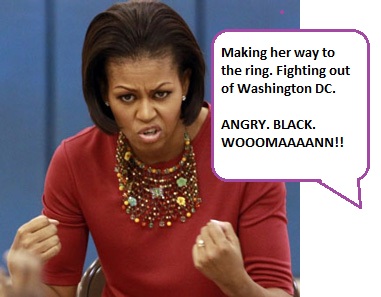Apr 19th, 2012
Given the way the left has depicted Trayvon Martin’s death—as a case of a “white Hispanic” who “hunted down” a young African American and was subsequently given a pass by a corrupt and racist criminal-justice system—one could hardly have been shocked to learn that on April 7th in Gainesville, Florida, a group of at least five black men shouted “Trayvon!” before proceeding to beat an innocent, 27-year-old white pedestrian so badly as to leave his face permanently disfigured. Neither was it particularly surprising when, four days later—again in Gainesville—a black crowd shouted “Trayvon!” while assaulting a white man who was trying to wrest his female companion’s purse from the hands of a black man who had just stolen it. Nor could it be described as stunning that someone in Sanford, Florida shot six bullets into an empty police cruiser on the morning of April 10th—to register an unmistakable vote of disapproval over how local police had purportedly mishandled their response to George Zimmerman’s recent killing of Martin.
The foregoing actions were those of people seeking retribution for two very separate offenses. First, of course, there was the killing of Martin—an act which, according to a Gallup poll, 72% of blacks (as compared to 31% of non-blacks) view mainly a result of Zimmerman’s own racial bias. Second, and much more important, was the perception that law-enforcement’s decision not to incarcerate the gunman in the immediate aftermath of the shooting reflected a racial bias that pervades the entire criminal-justice system of the United States. Gallup reports that 73% of blacks (vs. 35% of non-blacks) believe that Zimmerman would have been arrested (and presumably jailed) if his victim had been white, while a new ABC poll finds that 84% of blacks feel that the justice system—from the police to the courtroom to the penitentiary—treats them inequitably.
While it is virtually impossible to overstate the implications of this core belief which has so firmly embedded itself in the worldview of black Americans, one vital question begs for an answer: Is it true? Let us briefly survey the mountain of empirical evidence that the champions of “civil rights”—likeJackson and Sharpton—have so carefully avoided mentioning amid their incessant, thundering denunciations of the U.S. and its justice system.
The criminal-justice process is comprised of a number of stages, or decision points, at which law-enforcement personnel (such as police and judges) must determine how they should proceed—arrest or release a suspect; convict or acquit; impose a harsh or mild sentence; etc. Contrary to popular mythology, there is virtually no evidence of racial discrimination at any of these decision points. Black overrepresentation is almost entirely at the arrest stage,reflecting the simple fact that the “average” black engages in criminal activity more frequently than the “average” white. Not only are the outcomes at other decision points nearly identical for both races, but the slight differences that do exist tend to favor blacks. Further, the arrest rates of blacks living in cities that are the politically black-controlled are no lower than the arrest rates of blacks in white-controlled cities. Nor are these realities anything new; they have been true for decades.[1]
Consider that as early as 1983, the liberal-leaning National Academy of Sciences found “no evidence of a widespread systematic pattern of discrimination in sentencing.”[2] In 1985 the Journal of Criminal Law and Criminology concluded that a disproportionate number of blacks were in prison not because of a double standard of justice, but because of the disproportionate number of crimes they committed.[3] That same year, federal government statistician Patrick Langan conducted an exhaustive study of black and white incarceration rates and found that “even if racism [in sentencing] exists, it might explain only a small part” of the black overrepresentation among prison inmates.[4] In a 1987 review essay of the three most comprehensive books examining the role of race in the American criminal-justice system, the journal Criminology concluded that there was little evidence of anti-black discrimination.[5] The most exhaustive, best-designed study of comparative sentencing patterns—a 1990 analysis of more than 11,000 recently convicted criminals in California—found that the severity of sentences depended heavily on such factors as prior criminal records, the seriousness of the crimes, and whether guns were used in the commission of those crimes; race was found to have no effect whatsoever.[6] A 1991 RAND Corporation study found that a defendant’s racial or ethnic background bore little or no relationship to conviction rates; far more important than race were such factors as the amount of evidence presented, and whether or not a credible eyewitness testified.[7]
In 1993 a Justice Department study tracked the experience of more than 10,000 accused felons in America’s 75 largest cities found that black defendants fared better than their white counterparts—66% of black defendants were actually prosecuted, versus 69% of white defendants; among those prosecuted, 75% of blacks were convicted, as compared to 78% of whites.[8] Similarly, a 1996 analysis of 55,000 big-city felony cases found that black defendants were convicted at a lower rate than whites in 12 of the 14 federally designated felony categories.[9] This finding was consistent with the overwhelming consensus of other, previous, well-designed studies, most of which indicated that black defendants were slightly less likely to be convicted of criminal charges against them than white defendants.[10] In 1997, liberal criminologists Robert Sampson and Janet Lauritsen conducted a painstaking review of the voluminous literature on charging and sentencing, and concluded that “large racial differences in criminal offending,” and not racism, explained why proportionately more blacks than whites were in prison—and for longer terms.[11]
The foregoing realities remain as true today as they were two and three decades ago. Even though a massive industry, devoted entirely to uncovering any trace evidence of bias in the justice system, has arisen in America’s law schools and the civil-rights establishment, the net result of its cumulative efforts has been nothing more than an occasional study indicating a miniscule, unexplained racial disparity in sentencing, while most other analyses continue to findno racial effect at all.
Of course, one could never learn any of this from the “civil rights leaders” who were apparently struck mute in the aftermath of an April 3rd shooting that occurred outside a south Phoenix Taco Bell restaurant, where a 22-year-old black motorist at the drive-through window got into an altercation with Daniel Adkins, a 29-year-old, mentally disabled “white Hispanic” pedestrian. The argument grew heated, and the driver shot and killed Adkins. When police arrived at the scene, the gunman reported that Adkins had swung a bat or metal pipe at him. Though no such items were ever found at the scene, an independent witness reported that Adkins had swung his fists in the driver’s direction several times. Arizona, like Florida, has a “Stand Your Ground” law that allows a person to use deadly force when faced with a life-or-death confrontation. The gunman accordingly claimed that he had acted in self-defense, and thus he was not arrested.
While Daniel Adkins’ death was undeniably a human tragedy, it is quite conceivable that from a legal standpoint, the gunman, if in fact he felt that his life was in danger, acted within the bounds of the law. What is noteworthy, however, is that few Americans have ever heard of Daniel Adkins. Jackson and Sharpton have said nothing about him. Famous athletes and entertainers have not “tweeted” about him. And President Obama has felt no compulsion to exhort his countrymen, as he did in the wake of the Trayvon Martin killing, “to do some soul-searching to figure out how does something like this happen.” Now, why do you suppose that is?



































